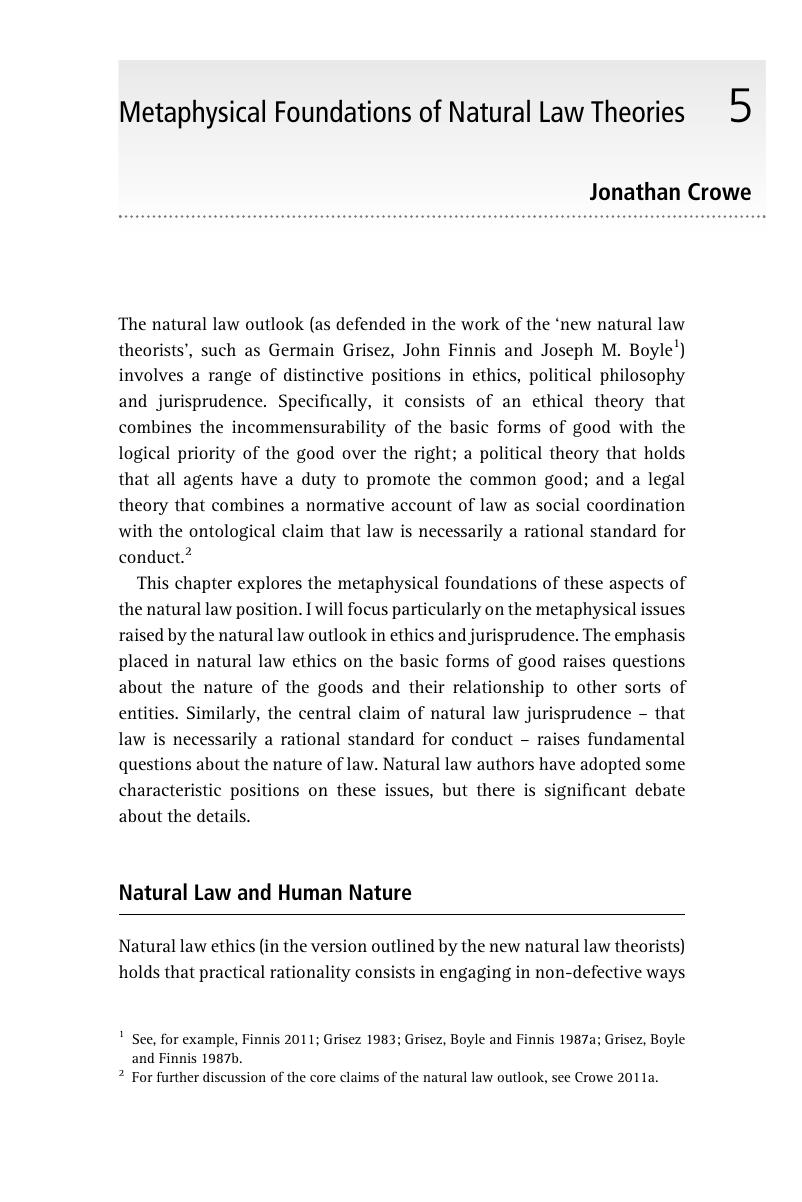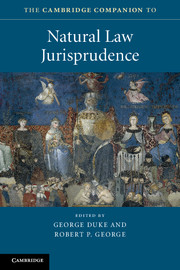Book contents
- The Cambridge Companion to Natural Law Jurisprudence
- Cambridge Companions to Law
- The Cambridge Companion to Natural Law Jurisprudence
- Copyright page
- Contents
- Notes on Contributors
- 1 Introduction
- Part I Foundations
- 2 Aquinas and Natural Law Jurisprudence
- 3 Natural Law, God and Human Dignity
- 4 Early Modern Natural Law Theories
- 5 Metaphysical Foundations of Natural Law Theories
- Part II Practical Reason, Normativity and Ethics
- Part III Law
- Index
- References
5 - Metaphysical Foundations of Natural Law Theories
from Part I - Foundations
Published online by Cambridge University Press: 04 July 2017
- The Cambridge Companion to Natural Law Jurisprudence
- Cambridge Companions to Law
- The Cambridge Companion to Natural Law Jurisprudence
- Copyright page
- Contents
- Notes on Contributors
- 1 Introduction
- Part I Foundations
- 2 Aquinas and Natural Law Jurisprudence
- 3 Natural Law, God and Human Dignity
- 4 Early Modern Natural Law Theories
- 5 Metaphysical Foundations of Natural Law Theories
- Part II Practical Reason, Normativity and Ethics
- Part III Law
- Index
- References
Summary

- Type
- Chapter
- Information
- The Cambridge Companion to Natural Law Jurisprudence , pp. 103 - 130Publisher: Cambridge University PressPrint publication year: 2017
References
Works Cited
- 18
- Cited by



